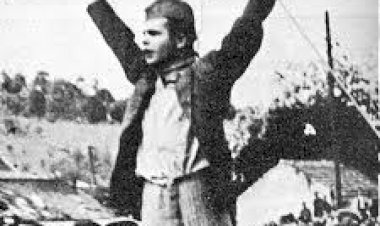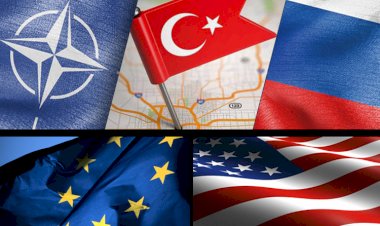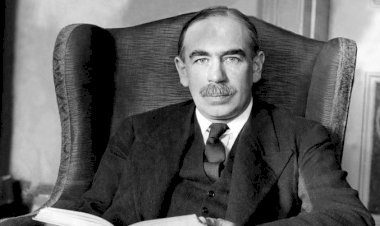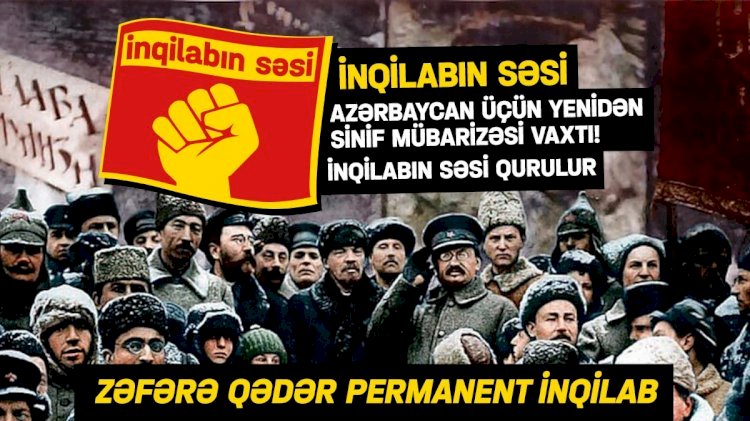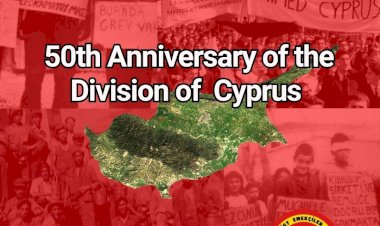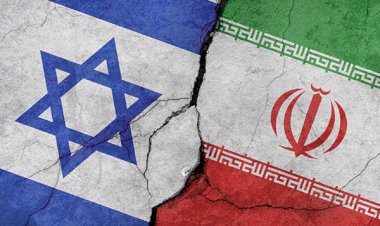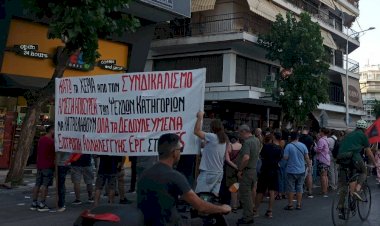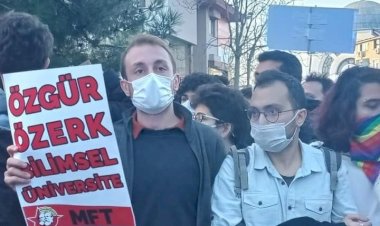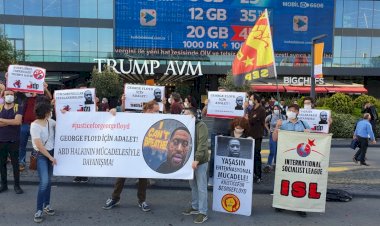Trotsky in the 21st Century- V.U. Arslan
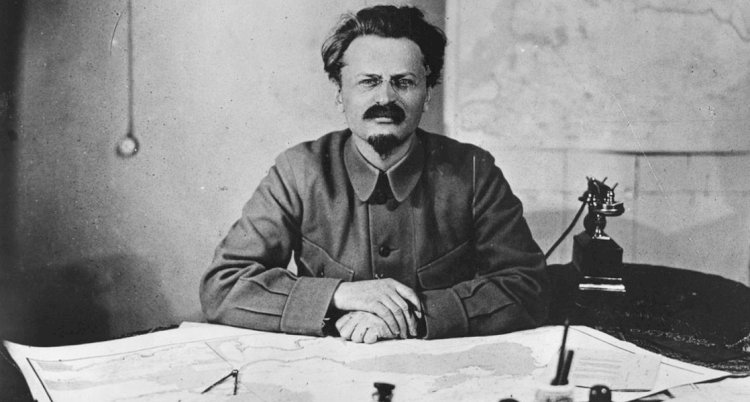
Trying to talk about a llegend like Trotsky in a short article is really hard work. However, it is obvious that we have to talk more about Trotsky as the revolutionary pole star, to inspire and radicalize the new youth generation.
The qualities that make Trotsky a revolutionary leader are truly dazzling: One of the two leaders of the October Revolution together with Lenin, the legendary warrior commander of the Red Army, the president and the leader of the soviets in 1905 and 1917, the writer of the most important texts of the commissar of Foreign Affairs and the Communist International in the era of Lenin, and also astonishing orator and great theoretician, a great intellectual and organizer whose strength is accepted even by his enemies…A life devoted to the working class and communism, fighter of the hardest fights…
If the importance of Trotsky was limited to these, it would undoubtedly continue to be remembered by the next generations as a great communist leader. But Trotsky, like Lenin, goes beyond being a leader in history. His revolutionary ideas and struggle shed light on the revolutionary struggle of the 21th century.
Validity of Leninism is the validity of the Leninist party theory above all; that is, the necessity of a vanguard party of revolutionaries for the working class to take power, revolutionaries is. The validity of Trotsky’s ideas stems from the theory of permanent revolution. This theory advocates revolutionary Marxism and expresses the only way out of the imperialist capitalist system. In addition, it stands against the Stalinist degeneration, which is still pretty common. Let me explain.
The Fate of the Soviets was the Fate of All
The Soviets emerged as the organic body of the massive general strike movement of the working class (for the first time in 1905). Its assembly and governing body consisted of representatives of workers elected from below. When the Soviets took power in October 1917, led by the Bolshevik Party, was dependent on the spread of the revolution. Undoubtedly, the Bolsheviks led by Lenin, who knew best that they could not remain like a socialist island in the middle of an imperialist capitalist ocean and that two deadly enemies (bourgeois dictatorship-dictatorship of the proletariat) could not live together. When the hopes were wasted and revolutions in Europe were defeated, the Bolsheviks resisted against the counter-revolution with their teeth and nails. Although Trotsky defeated the White Army, supported by 17 imperialist countries with Red Army in the legendary war, the war caused fatal damages. In Russia, where people was still suffering from the destructive effects of the WW I, 7 million people died, the Soviet economy collapsed and the cities were emptied during the Civil War.
As a result, the war was won, but the Soviets also had fatal wounds. Workers' power would collapse from within, not by external attacks or by the counter-revolution of the bourgeoisie and feudal remains. The material basis for corruption was the morale and physical collapse and atomization of the working class during the long war years. Since the class basis of the new regime had been dissolved, revolutionary principles had become impractical. The corruption the main feature everywhere and the leading trend was bureaucratization. The egalitarian principles were abandoned, and the word of the bureaucrats was superior everywhere. The head of the bureaucratic elite was Stalin. It was not the revolution that created Stalin- who was neither a theorist, nor a preacher, nor a tactician- a historical personality, but the weakening and bureaucratization of the revolution. Lenin gave his last fight before he died against bureaucratization and Stalin. The last fight of Lenin can be seen in his last correspondences and detailed documents. The reader will see in these documents that Lenin has rolled up his sleeves to liquidate Stalin. In one of Lenin's letters known as his will (this will has been kept secret from the public and the party), it is written that Stalin should be discharged. However, Lenin was unable to end this final fight. He passed away by failing to survive the latest crisis. The task of continuing Lenin's last fight was now on Trotsky's shoulders.
The death of Lenin was a turning point, since the bureaucratic caste led by Stalin undertook a major attack against revolutionary Marxism from this moment on. Of course, it was not possible to target Marx or Lenin directly in these attacks. Therefore, attacks on Marxism-Leninism were carried out in the personality of Trotsky. For example, the goal of the socialist world revolution- one of the clearest principles of Marxism- is now considered one of the signs of the "Trotskyist deviation" and is prosecuted everywhere. Stalin and his faction began by attacking the idea of egalitarianism. Thus, his bureaucratic privileges could not be criticized. Then, the so-called theory of “socialism in one country" was introduced and it was assumed that it could coexist with imperialism. As a result, the goal of spreading the revolution to the world was abandoned. The natural consequence of this was patriotism , which was nothing but an anti-Marxist bullshit. This would gradually turn into Russian nationalism, and Russia would once again be turned into a prison of peoples. Even anti-Semitism was used in smear campaigns against Trotsky. The oppressed peoples would then face pressures that led to ethnic cleansing. On the other hand, bureaucratic authoritarianism was shaped as an expression of communism as a rule.
Marxism-Leninism was thus turned into its opposite. When Stalin prepared the first five-year development plan, his aim was to create a strong Russia. Thus, socialism was reduced to planned economic development. Like Stalinist Russia, the CCP rule in China- which is still standing today- is proof that Stalinism is an ideology of nationalist development. In these regimes, workers and young people had no rights. As a natural result of excessive exploitation, the Russia turned into a police state. Because, if the workers and young people could find an opportunity, the consequences would be devastating. As a result, people think that communism equivalent to totalitarianism that bourgeoisie is using this even today. In other words, communism is known as the Stalinism, not as the egalitarian and Bolshevik ideas and practices.
If the Stalinists- who now advocate feminism- had little knowledge of history they would either give up Stalin or feminism, because Stalinist Russia destroyed all the achievements of the October Revolution on women's and LGBT rights. Maternity medals were given to those who gave birth to 10 children, while homosexuality was declared as a crime and bourgeois degeneration.
In 1928, the Soviets were abolished from the laws of the USSR, the absolute domination in the workplaces was now in the directors. The counter-revolutio reversed all the achievements and gains of the October. After that, the destruction of the cadres of the revolution started. Official documents of the USSR state that 1,548,336 were arrested and 681,682 of them were executed between 1937 and 1938.This means that 1000 execution in one day according to historians, the official data of the USSR reduces the number of deaths to the (at least) half. We may not know the exact number, but it is certain that the killing of more than a million communists is the biggest political genocide in history. Not only those in Russia, but also the leading cadres of the communist parties in the world that resisted or have the potential to resist Stalinism were destroyed. Thus, almost all the workers' movement and even the national liberation movements were ruled by the Stalinists through the communist parties in the world and the unions they were influential on. Communist parties turned into the means of the nationalist Russian foreign politics.
The only thing Stalinism against was the revolution. The spreading potentials of the revolutions frightened them, because they were privileged, despotic and stinking. The wind of revolution could spread to their own country, just like in Prague in 68.So they sabotaged the revolutions every time. The bureaucrats of the CPs and the unions they controlled did not hesitate to betray the revolutions in the most decisive moments in many parts of the world. It was not a single betrayal, it was a chain of betrayals to world revolution:China in 1925-26, Spain in 1936, Greece in 1943-48, Italy and France just after the Second World War, Indonesia 1965, France in 1968 once again, Chile in 1973, Portugal in 1974, Iran in 1979 experienced the betrayal with blood.
There are examples such as the 1959 Cuban Revolution, which had the chance to stand out. In 2005 Fidel Castro said that if Stalin lived, he would not let the Cuban Revolution to happen. To sum up, the Stalinist USSR never allowed such a thought as to shake the world status quo. Stalin tried to become the superpower of this status quo and turned the CPs into the tool of his own nationalist foreign policy in this direction.



